Sat-Sun: Non-working days
What is Multispectral Imaging?
Multispectral imaging is a method of obtaining information about the properties of objects by analyzing their interaction with electromagnetic radiation in different wavelength ranges. Unlike regular color photography, which uses only three channels (red, green, and blue), multispectral imaging can use several tens of channels to gather information about the properties of an object at different wavelengths (Fig. 1 (A)). For example, the Landsat satellite system has 11 spectral channels, and the Sentinel-2 satellite system has 13 spectral channels. There are also more advanced devices, such as hyperspectral cameras, which can use over 100 spectral channels (Fig. 1 (B)).
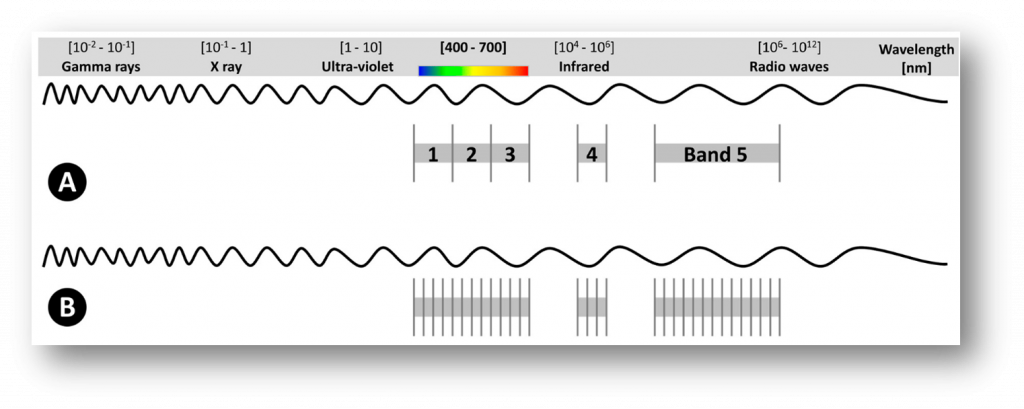
Figure 1. Hyperspectral imaging captures wavelengths from 250 to 15,000 nm and thermal infrared radiation.
Multispectral imaging is carried out using a multispectral camera with a sensor, device, or instrument that separates light into different spectra. As a result of the shooting, monochrome grayscale images are formed for each frame, the number of which depends on the number of camera channels. The analysis of information from the images takes place in geoinformation programs using compositions in the form of color or false-color images or various indices: NDVI, NDRE, SAVI, LAI. One of the main application areas of multispectral images is agriculture.

Figure 2. Example of the result of multispectral imaging using the NDVI vegetation index.
Physical Foundations of Multispectral Imaging
Multispectral imaging is based on spectroscopy and optics. Each object has its own spectral fingerprint, which reflects how wavelengths of light are absorbed, reflected, or transmitted through that object. Spectral cameras and sensors are used to obtain spectral information about the Earth's surface.
A spectral camera is a device capable of separating the electromagnetic wave reflected from the Earth into individual wavelengths in different ranges and measuring their reflection intensity. These data are then used to create spectral images, showing the percentage of light absorbed, reflected, or transmitted at each wavelength by an object on the Earth's surface.
Spectral channels in multispectral imaging represent ranges of electromagnetic waves detected by sensors or cameras on board a satellite or aircraft. Each spectral channel is designed to measure light intensity in a specific range of wavelengths.
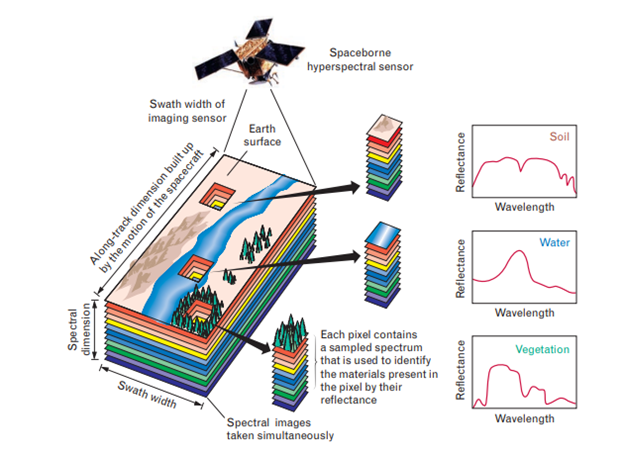
Figure 3. Scheme of obtaining multispectral images: (1) satellite imaging system; (2) swath; (3) Earth's surface; (4) spacecraft range resolution; (5) spectral resolution; (6) swath; (7) spectral images captured simultaneously; (8) each pixel contains a selected spectrum used to determine the types of materials present based on their reflectance.
For capturing vegetation, channels registering light intensity from visible to infrared are used, allowing the assessment of plant photosynthetic activity and their condition. For monitoring land surfaces, channels capable of registering energy in a broader range, including ultraviolet and microwave ranges, are used.
The use of different spectral channels allows obtaining more complete and accurate information about the Earth's surface. Each channel records information about light in a specific wavelength range, which can be useful for specific applications and tasks in multispectral imaging.
Table 1 – Spectral channels and their application areas
Physical Principles of Multispectral Imaging
Multispectral imaging is based on spectroscopy and optics. Each object has its own spectral fingerprint, which reflects the wavelengths of light that are absorbed, reflected, or transmitted through that object. Spectral cameras and sensors are used to obtain spectral information about the Earth's surface.
A spectral camera is a device capable of breaking down the electromagnetic wave reflected from the Earth into individual wavelengths in different ranges and measuring their reflection intensity. These data are then used to create spectral images that show the percentage of light absorbed, reflected, or transmitted at each wavelength by objects on the Earth's surface.
Spectral channels in multispectral imaging represent ranges of electromagnetic waves detected by sensors or cameras on board satellites or aircraft. Each spectral channel is designed to measure the intensity of light in a specific range of wavelengths.

Figure 3. Scheme of obtaining multispectral images: (1) space imaging system; (2) swath; (3) Earth's surface; (4) range resolution of the spacecraft along the flight path; (5) spectral resolution; (6) swath; (7) spectral images are captured simultaneously; (8) each pixel contains a selected spectrum used to determine the types of materials present based on their reflective properties.
Channels used for vegetation cover capture intensity of light from visible to infrared, allowing the assessment of photosynthetic activity and the condition of plants. Channels for monitoring land surfaces can register energy across a wider range, including ultraviolet and microwave ranges.
Using different spectral channels provides more comprehensive and accurate information about the Earth's surface. Each channel records information about light in a specific range of wavelengths, which can be useful for specific applications and tasks in multispectral imaging.
Table 1 – Spectral channels and their application areas
|
Spectral Channel Name and Its Application Area, µm |
Application of Satellite Information in Remote Sensing of the Earth |
|
Visible Blue – Violet 0.42 – 0.55 |
The acquired data are used for oceanographic applications and atmospheric corrections of remote sensing data, particularly in calculating certain vegetation indices. |
|
Visible Blue |
This range is designed for displaying coastlines, bathymetry, and sediments; differentiation of soil from vegetation and deciduous from coniferous flora; mapping forest types; and detecting artificial structures. Structural mountainous rocks (e.g., shales, phosphates, evaporites) are well-fragmented. |
|
Visible Green |
This zone corresponds to the maximum reflectance of green (healthy) vegetation and is used for forest inventory. It is also used for creating maps of sediment and precipitation concentrations in turbid waters. |
|
Visible Red |
This zone is needed to distinguish various plant species as it contains the chlorophyll absorption band. It is also used for determining soil boundaries and geological delineation (deposits, ore bodies, oil fields). |
|
Near Infrared |
This zone is particularly sensitive to the amount of vegetation biomass. It is useful for soil identification, crop yield estimation, and determining shorelines of water bodies on the terrain. Vegetation contaminated with oil products can also show a measurable shift at the "red edge." |
|
Shortwave Infrared |
This zone is sensitive to the water content in vegetation and soils, the assessment of which is useful in the fruiting stage of drought studies and plant health research. Clouds can be distinguished from snow and ice in this spectrum. |
|
Thermal Infrared |
Used to determine the temperature of the underlying surface, intensity of heat from objects. It can also be used to detect geothermal activity. |
|
Thermal IR Band, Shortwave Infrared |
In this spectral zone, materials rich in silicon, dust in the air, and bare soils often provide a relatively high signal. This zone is important for delineating soil boundaries, as well as the degree of soil and vegetation moisture. |
Difference Between Multispectral and Panchromatic Images
As mentioned earlier, the spectral channels of multispectral images are inherently monochromatic, i.e., grayscale images, which can mistakenly be compared to panchromatic images. It is important to understand that multispectral imaging and panchromatic imaging are two different methods of capturing images based on the use of different spectral channels.
Panchromatic images are black and white images obtained using only one spectral channel. These images lack color and are presented in shades of gray. Such images typically have high spatial resolution and are used to reveal details and textures on the terrain.
Multispectral images, on the other hand, involve the use of multiple spectral channels, each representing a distinct range of the electromagnetic spectrum. This allows for gathering information about various physical and chemical properties of the Earth's surface. While each channel taken individually from multispectral images would also be presented in shades of gray, combining data from different channels can result in the creation of a color image with the highlighting of various objects and phenomena.

Figure 4. Color RGB and panchromatic image
Difference Between Multispectral and Short-Wave Infrared (SWIR) Images
Multispectral and Short-Wave Infrared (SWIR) images differ from each other in terms of the wavelengths they operate on and the information they can provide about the Earth's surface.
Multispectral images cover selected ranges of the electromagnetic spectrum, such as visible light, including Near and Short-Wave Infrared (SWIR), and ultraviolet radiation. They have the ability to gather information about various spectral characteristics of objects and the surrounding environment.
In contrast, SWIR images are based on registering only short-wave infrared radiation. This range is situated between visible and long-wave infrared radiation. SWIR images have the ability to penetrate through various types of atmospheric and temperature disturbances and can register the infrared radiation emitted by objects or reflected from them.
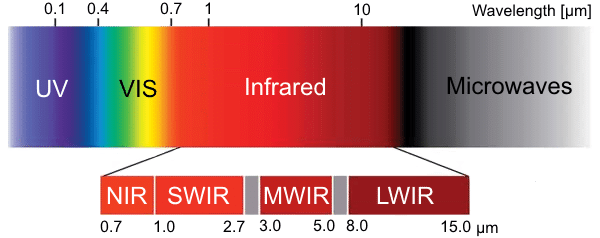
Figure 5. Electromagnetic Spectrum
Differences between Multispectral and SWIR images:
- Spectral Range: Multispectral images cover a broader spectrum of the electromagnetic spectrum, including visible light, infrared, and ultraviolet radiation. SWIR images are limited to the short-wave infrared range.
- Information about Spectral Characteristics: Multispectral images provide information about the spectral characteristics of objects, allowing for the differentiation and classification of various materials and features. SWIR images are useful for detecting specific substances and chemical components that exhibit distinct characteristics in the short-wave infrared spectrum (e.g., fire detection).
- Penetration Potential: SWIR images have an advantage in penetrating through atmospheric and temperature disturbances, making them useful for detecting objects at significant depths or in weather conditions that may hinder the registration of visible light.
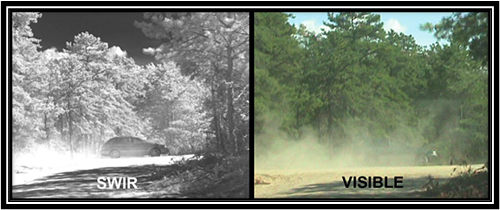
Figure 6. SWIR and Visible Spectrum Images
Processing Multispectral Imaging Data
Methods for processing multispectral imaging data can vary depending on specific tasks and applications. However, there are several fundamental processing methods widely used in this field:
- Land Cover Classification: This method allows the separation of the image into different classes, such as forests, water bodies, cities, etc., based on the spectral characteristics of each pixel in the image. Machine learning algorithms like Support Vector Machine, Random Forest, and others are applied for this purpose.
- Vegetation Status Assessment: This method helps determine the vegetation status, such as green biomass density, plant growth stages, crop yield, etc., based on spectral characteristics. Specialized indices like Normalized Difference Vegetation Index (NDVI), Normalized Difference Water Index, and others are applied.
- Determination of Surface Chemical Composition: This method allows the determination of the chemical composition of the Earth's surface, such as mineral content, metals, organic substances, etc., based on spectral characteristics. Specialized indices like Iron Oxide Index, Clay Index, and others are applied.
- Surface Temperature Measurement: This method measures the surface temperature of the Earth based on infrared spectral channels. This can be useful for studying climate changes, monitoring natural disasters, etc.
- Image Quality Enhancement: This method aims to improve the quality of the image by removing noise and artifacts using various filters and algorithms.
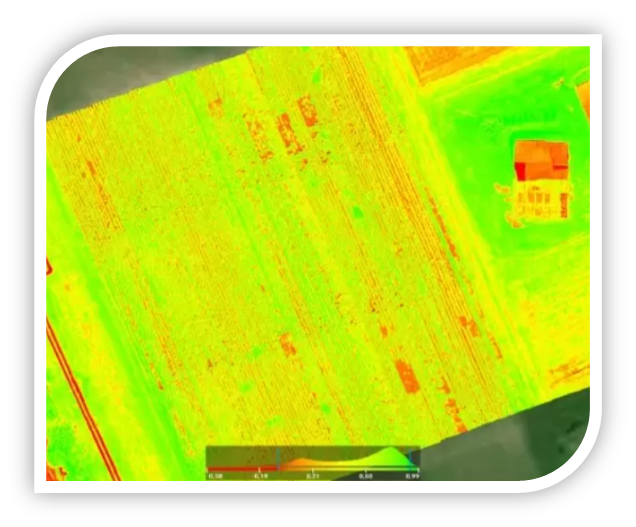
Figure 7. Example of NDVI Index Application

Figure 8. Example of VARI Index Application - a biophysical index used to assess green pigment content in plants based on multispectral images.
Learn more about vegetation indices in our article.
Various algorithms are used to highlight objects in multispectral images, which may vary depending on specific tasks and applications. Some of the most common algorithms include:
- Thresholding Algorithms: This type of algorithms is used for image binarization based on set threshold values. Pixels with values above or below the specified threshold can be highlighted as objects or background.
- Texture-based Characteristics Algorithms: This group of algorithms uses texture characteristics such as entropy, smoothness, gradient, etc., to identify objects in the image. These algorithms can be particularly useful for detecting objects with similar spectral characteristics to the background.
- Mathematical Morphology-based Algorithms: This type of algorithms uses mathematical morphology to highlight objects in the image. These algorithms can be particularly useful for processing images containing noise and artifacts.
- Machine Learning-based Algorithms: This group of algorithms uses machine learning methods such as neural networks, support vector machines, and random forests to train models for object delineation in images. These algorithms can be particularly effective in cases where images contain complex textures and structures.

Figure 9. Original Image and Result of Thresholding Algorithm
Software for Multispectral Image Processing
There are numerous programs for processing multispectral images that can be used depending on specific tasks and requirements. Some of the most common programs include:
- ENVI: One of the most popular programs for processing multispectral images, providing a wide range of tools for image processing and analysis. ENVI is used in various industries, including geology, ecology, agriculture, and others.
- ERDAS Imagine: Another popular program for processing multispectral images, offering powerful tools for processing and analyzing geospatial data. ERDAS Imagine is used in various fields, including geology, forestry, agriculture, and others.
- ArcGIS: A geographic information system program that provides tools for processing and analyzing geospatial data, including multispectral images. ArcGIS is used in various industries, including geology, hydrology, ecology, and others.
- Matlab: Software for numerical computing and programming, which can also be used for processing multispectral images. Matlab provides a wide range of image processing tools, including machine learning tools.
- QGIS: A free geographic information system program that also provides tools for processing multispectral images. QGIS can be used for various tasks, including land parcel analysis, nature conservation, and others.
Additionally, there are many other programs such as Pix4Dmapper, Global Mapper, eCognition, and others that can also be used for processing multispectral images depending on specific tasks and needs.
Advantages of Multispectral Imaging
Multispectral imaging has several significant advantages that set it apart from conventional RGB satellite imagery.
Advantages:
- Composition Detail: Multispectral imaging enables the exploration and analysis of spectral characteristics of objects and surfaces. It extends the spectral range, capturing information not visible to the human eye. This allows for determining the composition and properties of materials, such as vegetation cover, soils, water bodies, and more.
- Change Monitoring: Multispectral imaging allows for tracking changes over time. By comparing spectral data obtained at different periods, the dynamics of changes in vegetation, land use, plant diseases, pollution, and more can be studied. It is an invaluable tool for environmental monitoring and resource management.
- Detection of Hidden Patterns: Multispectral data enables the detection of patterns and signals not visible through regular observation. For example, areas with damaged or diseased plants can be highlighted, early signs of stress can be detected, predictions about crop yield can be made, or the presence of various chemicals can be identified.
- Utility Across Industries: Multispectral imaging finds wide applications across various industries. It is used in agriculture to optimize field and crop management, in ecology and geology for studying biodiversity and landscapes, in hydrology and environmental protection for analyzing the quality and condition of water resources, and in surveying and cartography for creating high-precision maps and urban planning.
- Ultra-High Resolution: The use of ultra-high-resolution multispectral imaging allows for obtaining more detailed and accurate data. This is beneficial for applications requiring high precision, such as studies of vegetation and land use, as well as for reducing noise and artifacts during image processing and analysis.
Difference Between Multispectral Imaging from Satellites and UAVs
The difference between multispectral imaging from satellites (spacecraft) and unmanned aerial vehicles (UAVs) can be observed in several aspects.
- Distance and Resolution:
- Satellites operate at a significant height above the Earth, allowing them to capture imagery on a global scale. Satellite image resolution typically ranges from several meters to several tens of meters, depending on the type and purpose of the spacecraft.
- UAVs, on the other hand, operate at low altitudes, providing higher resolution. UAV image resolution can range from several centimeters to several meters, allowing for more detailed and accurate data.
- Flexibility and Accessibility:
- Satellites require substantial financial investment and time for development, launch, and decommissioning. They are designed for extensive monitoring programs and studying global changes. Access to satellite data is often restricted due to commercial or limited scientific availability.
- UAVs are flexible and accessible tools for multispectral imaging. They can be launched and controlled locally, enabling more targeted and individualized operations. UAVs allow for imaging at specific times and locations, expanding the possibilities for researchers and the application of multispectral data in various fields.
- Imaging Methodology for UAVs: Multispectral imaging on UAVs is carried out using specialized cameras mounted on the aircraft, which register energy in various spectral ranges. Common cameras for UAV-based multispectral imaging include medium-resolution cameras (from several centimeters to several tens of centimeters), such as RedEdge or MicaSense. These cameras can operate in the visible, infrared, and thermal spectral ranges, providing information about different properties and conditions of objects and terrain. The use of UAVs for multispectral imaging offers new possibilities in agriculture, ecology, geology, surveying, and other fields requiring detailed analysis and monitoring.
Conclusion
Multispectral imaging offers numerous advantages compared to visible range imaging. It allows the capture of additional spectral data not visible to the human eye, such as infrared or thermal radiations. This expands the possibilities of analysis and enables the detection of information not accessible using only the visible spectrum.
Multispectral imaging opens a wide range of possibilities in various fields. In agriculture, it can be used for monitoring vegetation, detecting plant diseases, and identifying potential crop issues. In ecology and geology, it helps researchers study changes in vegetation, soil composition, landscapes, and terrain. In forestry, multispectral scanning contributes to the detection of forest fires, assessment of tree vegetation conditions, and forest density.
Furthermore, multispectral imaging plays a crucial role in climate science and atmospheric studies, allowing observation of the atmosphere's condition and its contents, influencing climate change and atmospheric processes. It is also valuable in civil and industrial construction for monitoring building conditions, construction sites, and territory planning.
Thus, multispectral imaging provides more comprehensive and accurate information about the state of objects, terrain, and the environment. Its capabilities find applications in various research areas and industries, contributing to more effective monitoring, planning, and decision-making.

